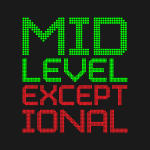The 2016 TV Deal and the Salary Cap
At this point, just about everybody has heard about the mammoth TV deal that the NBA is looking to ink in 2016 and the resulting salary cap increase. If you frequent Mid Level Exceptional or Grantland you also may have heard about owners wanting to avoid a sudden jump in the salary cap.
Such a jump in salary cap would mean a windfall for NBA players, especially sought-after free agents. A few articles already messed around and dropped a $202 million contract estimate for LeBank James. But before we get carried away and LeBron’s exes get too sour, it should be clarified that the $202 million contract figure assumes a $100 million salary cap. Whoa there *Big Sean voice*.
A cap that high seems a bit steep, so for entertainment and curiosity’s sake let’s explore how the 2016 TV deal could affect the salary cap for the 2016-2017 season. First, though, a refresher on how the salary cap works would be helpful.
The salary cap is based on Basketball Related Income (BRI). BRI includes any income received by the NBA, NBA Properties or NBA Media Ventures and, as you may have guessed, TV deal is a big piece of the pie. The cap is currently calculated by multiplying projected BRI by 44.74% less projected player benefits and then dividing the result by 30. As always, the figure is subject to certain adjustments by the league. The salary cap is in effect for one year starting in early July, at which point it is recalculated for the subsequent season. The previous TV deal, worth almost $7.5 billion over 8 years was signed in 2008. Below are the salary cap figures since then:
Combine the new TV deal with non-TV BRI growth and you can expect the salary cap in 2016 to be substantially higher than the current $63 million. But just how much higher is the real question. To answer this, I did a sensitivity analysis on the 2016 salary cap looking at how the TV deal multiple (ex. 2.0x multiple implies the 2016 TV deal is worth twice as much as the current one) and non-TV related BRI growth affect the salary cap.
Non-TV BRI growth is the percentage by which BRI outside of major TV contracts would grow each year, ranging from 0% to 6%. The 2016 TV Deal Multiple column is the assumed multiple of the 2016 TV deal in relative to the current one (~$930 million annually), and it ranges from 1.7x to 2.3x. Though it may be hard to picture the NBA getting a TV deal worth more than double the current one, we live in interesting times and have seen crazier things happen. Also worth noting, the salary cap figure could change quite a bit if the salary cap is agreed to be a different percentage of BRI during CBA negotiations in 2017.
Now let’s look at the numbers. Depending on which assumptions you use, the 2016 salary cap estimate ranges from $73.9 to $85.2 million. Word on the street is the NBA is shopping for a deal approximately twice the size of the current one and non-TV BRI has grown at about 2.5% over the past five years, meaning the most likely scenario is a cap around $80 million in 2016. The $100 million salary cap assumption was indeed lofty and would require the 2016 TV deal to be THREE times the current deal AND non-TV BRI growth to clock in at over 16% per year. I wouldn’t hold my breath.
Even though the salary cap will not be a cool $100 million, a likely 24% jump in cap will also lead to substantial pay raises for players. Though this does mean LeBron James’s previously mentioned contract won’t be topping the $200 million mark, he can still expect a contract somewhere between $150 and $173 million over five years. Not bad for a kid from Akron.
What do you guys think? How big do you see the 2016 TV deal being? Who, outside of LeBron and KD, do you see commanding such mega contracts? Drop a question or comment below.


